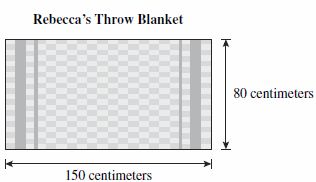General Information
Test Item Specifications
- linear units of measure between different measurement systems (US customary or metric [SI]);
- derived units with respect to linear measurement within the same system; and
- linear units of measure within the same system to solve real-world problems.
Students will compare, contrast, and convert:
Items may include conversions from customary to metric or vice versa, using only one of the conversions found on the reference sheet.
Items may include up to three conversions within the same system of measurement (e.g., millimeters to centimeters, centimeters to meters, and meters to kilometers).
Items may include conversions within the same unit of measure when converting derived units (e.g., miles per hour to feet per second).
Items may include converting a denominate number (e.g., 5 ft 3 in.) to a single unit within the same system of measurement, or vice versa.
Gridded-response items may only involve conversions within the same system of measurement.
Items will not include a combination of multiple conversions within the same system and across different measurement systems (e.g., convert meters to inches).
All items should be set in a real-world context.
Sample Test Items (2)
| Test Item # | Question | Difficulty | Type |
| Sample Item 1 | Rebecca bought a rectangular throw blanket like the one shown below.
Which is closest to the dimensions of Rebecca’s throw blanket? |
N/A | MC: Multiple Choice |
| Sample Item 2 | Clarissa has a lamp that measures 6 1/2 feet in height. What is the height, in inches, of the lamp? | N/A | GR: Gridded-Response |
Related Resources
Lesson Plan
| Name | Description |
| Paper Route Logic | Students will be helping Lily Rae find the most efficient delivery route by using speed and distance values to calculate the shortest time to make it to all of her customers. Model Eliciting Activities, MEAs, are open-ended, interdisciplinary problem-solving activities that are meant to reveal students’ thinking about the concepts embedded in realistic situations. MEAs resemble engineering problems and encourage students to create solutions in the form of mathematical and scientific models. Students work in teams to apply their knowledge of science and mathematics to solve an open-ended problem, while considering constraints and tradeoffs. Students integrate their ELA skills into MEAs as they are asked to clearly document their thought process. MEAs follow a problem-based, student centered approach to learning, where students are encouraged to grapple with the problem while the teacher acts as a facilitator. To learn more about MEA’s visit: https://www.cpalms.org/cpalms/mea.aspx |
Problem-Solving Task
| Name | Description |
| Lifting a Lion | "Students will work in groups to solve a real-world problem presented by the book: How Do You Lift A Lion? Using a toy lion and a lever, students will discover how much work is needed to raise the toy lion. They will use proportions to determine the force needed to lift a real lion" from TI World Math. |
Teaching Idea
| Name | Description |
| Caribou Caravan-SeaWorld Classroom Activity | Students will trace the migration route of caribou (reindeer) and learn the animal's natural history. |
Tutorial
| Name | Description |
| Converting Speed Units | In this lesson, students will be viewing a Khan Academy video that will show how to convert ratios using speed units. |
Student Resources
Tutorial
| Name | Description |
| Converting Speed Units: | In this lesson, students will be viewing a Khan Academy video that will show how to convert ratios using speed units. |

